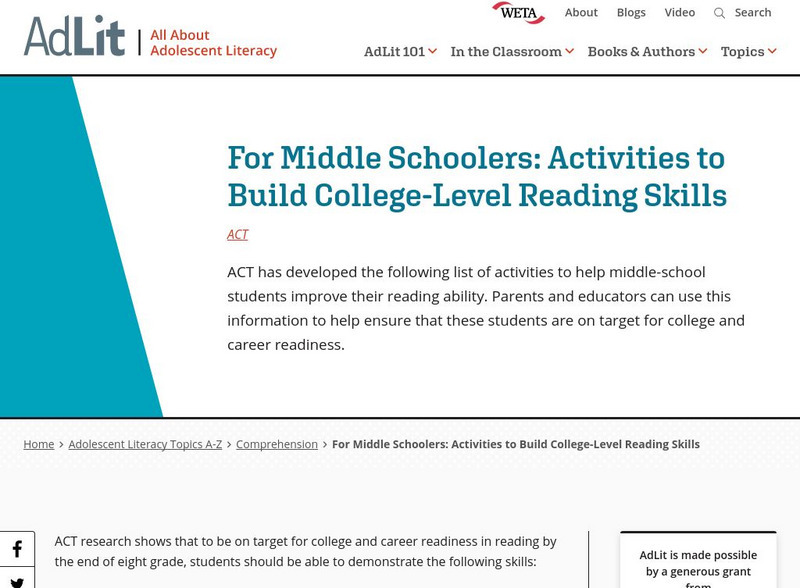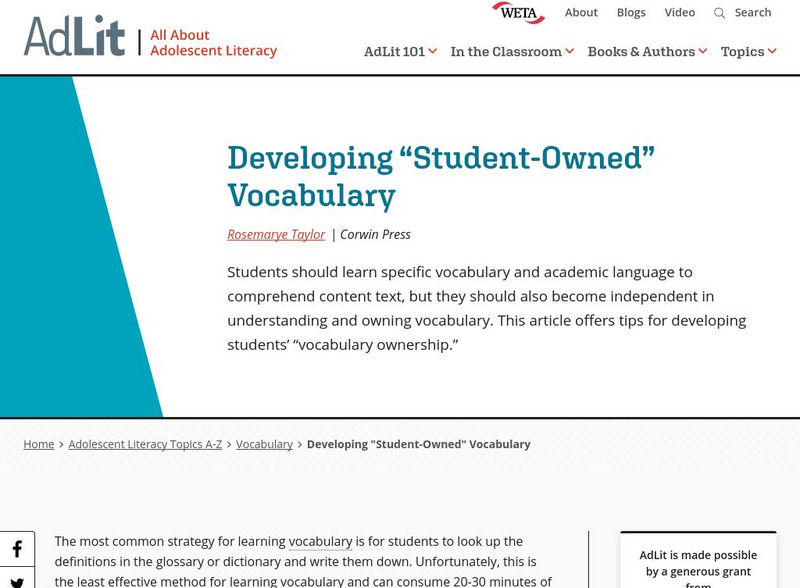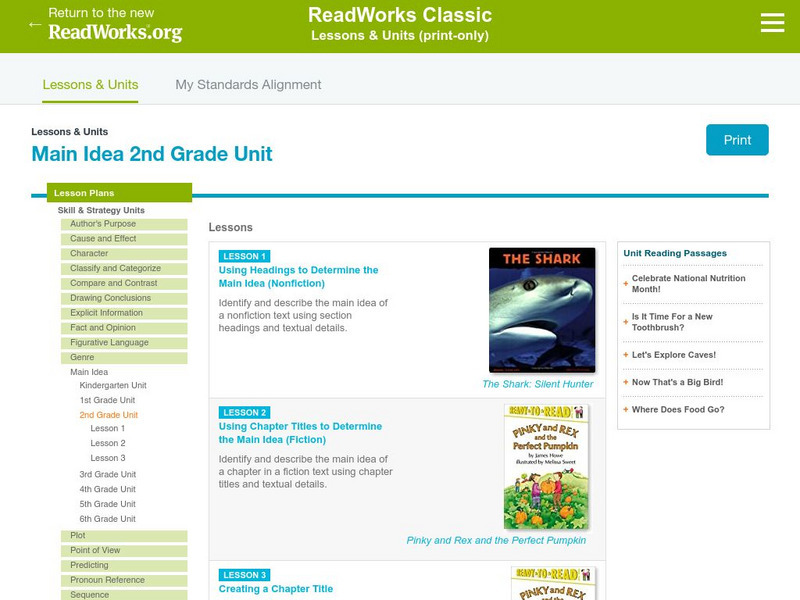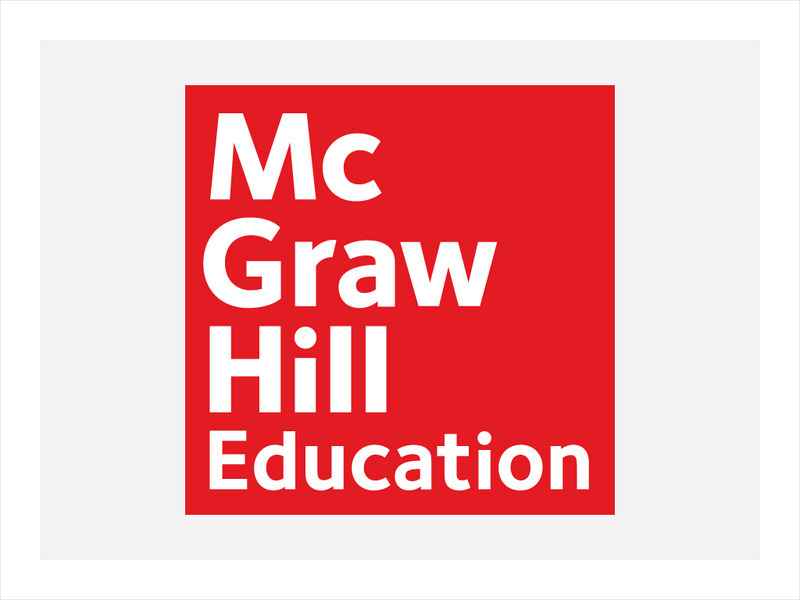Hi, what do you want to do?
Scholastic
Scholastic: Informational Text: Reading Response: Claim Evldence Reasoning [Pdf]
This graphic organizer can be used with students when they read informational text. Students will identify a claim, list text evidence that supports the claim, and explain how the information can be used for their future understanding of...
Reading Rockets
Reading Rockets: Developing Academic Language: Got Words?
This is a research-based article concerning how to best teach academic vocabulary. Research finds that most teachers assign and mention vocabulary, but to be effective, instruction must be direct and meaningful. Recommendations for...
E Reading Worksheets
E Reading Worksheets: Text Structure
This resource focuses on text structure by defining the types of organizational patterns and providing examples of each. These are followed by a list of links to practice activities on text structure and main idea, as well as some videos.
Reading Rockets
Reading Rockets: Building World Knowledge: Informational Text
Before, during, and after-reading ideas for introducing students to informational texts in the early-elementary grades in order to boost reading achievement through the upper-elementary grades.
Florida Center for Reading Research
Florida Center for Reading Research: Expository Text Structure: Just the Facts
A lesson plan in which students read a text and complete a graphic organizer to identify the topic and supporting details or facts. Materials are included.
Read Works
Read Works: Genre Studies: Informational Texts: Pictures and Photographs
[Free Registration/Login Required] Lesson uses All About Cats and Kittens by Emily Neye to teach students how to identify facts from photographs and pictures in informational text. Ideas for direct teaching, guided practice, and...
E Reading Worksheets
E Reading Worksheets: Text Structure Worksheets
This site provides several assignments and graphic organizers related to identifying text structures. Analyzing the following types of text structures are provided: main idea and supporting details; cause and effect; chronological order;...
Tom Richey
Slide Share: Author's Purpose and Point of View
This downloadable slideshow focuses on how an author's purpose and point of view work together in fiction and nonfiction, and how to identify the point of view.
Florida Center for Reading Research
Florida Center for Reading Research: Expository Exploration [Pdf]
A lesson plan in which students read a text and complete a graphic organizer to identify the main idea and supporting details. Materials are included.
AdLit
Ad lit.org: Seven Strategies to Teach Students Text Comprehension
Comprehension strategies are conscious plans - sets of steps that good readers use to make sense of text. Comprehension strategy instruction helps students become purposeful, active readers who are in control of their own reading...
AdLit
Ad lit.org: For Middle Schoolers: Activities to Build College Level Reading Skills
ACT has developed this list of activities to help middle-school students improve their reading ability. Parents and educators can use this information to help ensure that these students are on target for college and career readiness.
AdLit
Ad lit.org: Developing "Student Owned" Vocabulary
Students should learn specific vocabulary and academic language to comprehend content text, but they should also become independent in understanding and owning vocabulary. This article offers tips for developing students' "vocabulary...
Read Works
Read Works: Grade 2: Three Lesson Unit: Main Idea
[Free Registration/Login Required] A series of three lesson plans designed to teach students to identify main ideas through headings and chapter titles, and then to write appropriate titles of their own. Lessons are based on the books...
E Reading Worksheets
E Reading Worksheets: Summarizing Worksheets and Activities
In this instructional resource, students will learn more about summarizing texts. Worksheets and PowerPoint lessons are provided to reinforce understanding about ways to summarize nonfiction texts and to identify main ideas. This module...
E Reading Worksheets
E Reading Worksheets: Patterns of Organization: Sequence
This learning module provides an explanation of the text structure for sequence. An explanation of the text structure for a sequence is provided, and chronological order text structure is demonstrated in a video tutorial lesson [1:24]
Polk Brothers Foundation Center for Urban Education at DePaul University
De Paul University: Center for Urban Education: Prose Constructed Response Organizer [Pdf]
This resource provides a downloadable graphic organizer designed for preparing a constructed response that must compare two sources that make the same claim: two articles or an article and a video.
Polk Brothers Foundation Center for Urban Education at DePaul University
Depaul University: Center for Urban Education: Improve an Argument [Pdf]
This resource provides a downloadable worksheet. Students will read a nonfiction article and then answer scaffolded questions that will help them determine the strength of evidence presented in the argument. Then students will provide...
McGraw Hill
Mc Graw Hill:informational Text: Analyze Development of Text Elements:individuals
Read an informational piece, and learn how to analyze the development of individuals in the text. Includes practice exercises.
McGraw Hill
Mc Graw Hill: Informational Text: Analyze Development of Text Elements: Events
Read an informational piece, and learn how to analyze the development of an event in the text.
Curated OER
Mc Graw Hill: Part 2 Reading: Informational Text: Analyze Multiple Accounts
Learn about the different perspectives that can be used in an informational text.
McGraw Hill
Mc Graw Hill: Informational Text: Determine Central Idea and Supporting Details
To understand a text, you must understand the central idea of the story. Learn how to recognize the central idea and supporting details with this article. Click the links at bottom right.
Curated OER
Mc Graw Hill: Part 2 Reading: Informational Text: Author Point of View
Learn four questions you can ask while reading an informational text to determine the author's point of view. Includes practice worksheet.
Curated OER
Mc Graw Hill: Part 2 Reading: Informational Text: Compare Text Structures
Compare the text structures in two nonfiction passages in this tutorial.
Curated OER
Mc Graw Hill: Informational Text: Compare and Contrast Authors' Presentations
Learn how informational text can be written from different points of view. Includes model texts with practice exercises.





![Scholastic: Informational Text: Reading Response: Claim Evldence Reasoning [Pdf] Graphic Scholastic: Informational Text: Reading Response: Claim Evldence Reasoning [Pdf] Graphic](https://content.lessonplanet.com/knovation/original/244734-74184753ee53d6872b10ba36f1639585.jpg?1661510818)



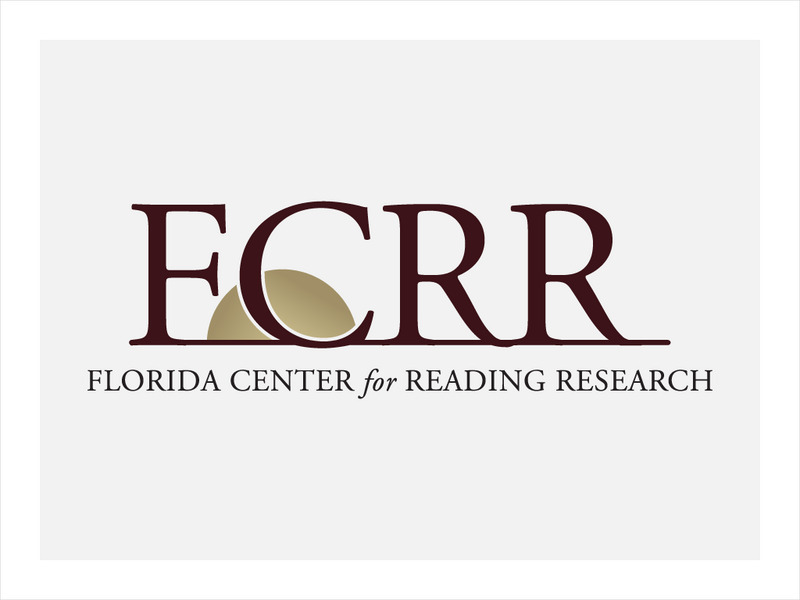


![Florida Center for Reading Research: Expository Exploration [Pdf] Lesson Plan Florida Center for Reading Research: Expository Exploration [Pdf] Lesson Plan](https://content.lessonplanet.com/knovation/original/509114-1621b87800788ad03f8f6464b347c698.jpg?1661786951)

